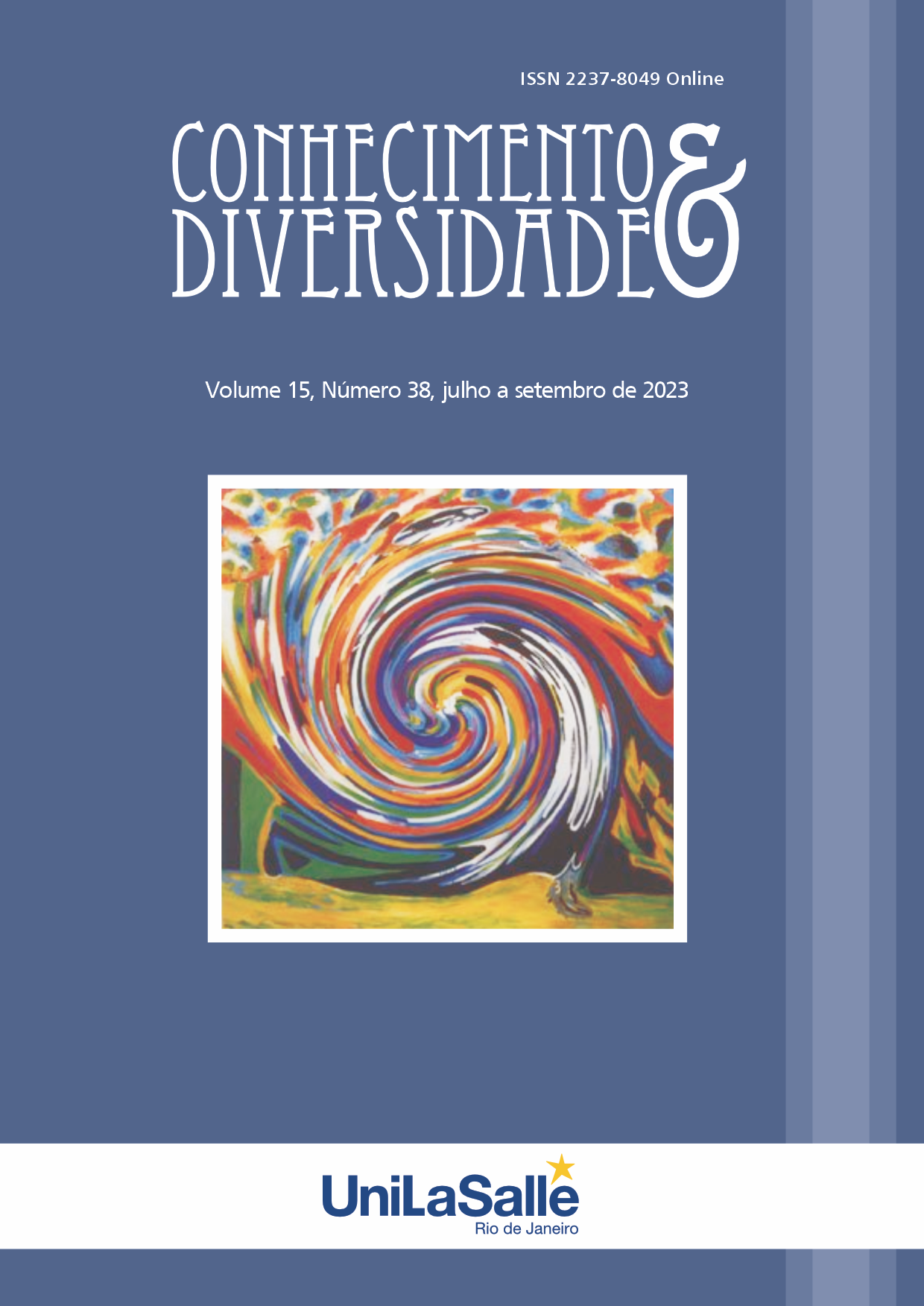PECULIARITIES OF THE CORRELATION BETWEEN NEUROPHYSIOLOGICAL PARAMETERS AND THE INTENSITY OF MANIFESTATIONS OF ADHD IN PRIMARY SCHOOL CHILDREN
DOI:
https://doi.org/10.18316/rcd.v15i38.11036Palabras clave:
Attention deficit hyperactivity disorder. Neuropsychology. Neurophysiology. Electroencephalogram. Behavioral disorders.Resumen
The article presents a comprehensive analysis of both theoretical foundations and empirical findings regarding the investigation into the correlation between neurophysiological parameters and the intensity of attention deficit hyperactivity disorder (ADHD) manifestations in primary school children. Specifically, the study examines the unique characteristics of this correlation through the utilization of neurophysiological indicators. Within each subgroup of children diagnosed with ADHD, a notable association has been observed between elevated levels of ADHD manifestations, as assessed through the Vanderbilt ADHD Diagnostic Rating Scale (VADRS), and distinctive qualitative aspects of the electroencephalogram (EEG). Additionally, the study identifies certain distinct features of brain bioelectrical activity that deviate from the norm for each respective subgroup. Notably, among children exhibiting prominent hyperactivity and impulsivity, the highest frequency of elevated indicators was consistently observed concerning the fourth type of EEG, whereas the second type of EEG was not commonly encountered within this particular subgroup. Among children with a predominant attention deficit, the second type of EEG demonstrated a prevailing occurrence of the highest mean scores, while the third type of EEG was found to be atypical within this subgroup. These findings have practical implications for the development of a psychological support program, encompassing various aspects such as conducting psychoeducational interventions within the child's environment, strategic planning and selection of corrective and developmental approaches, as well as the establishment of a comprehensive framework consisting of methods and techniques aimed at stabilizing the child's condition.
Citas
Ahmadi, M, Kazemi, K, Kuc, K, Cybulska-Klosowicz, A, Zakrzewska, M, Racicka-Pawlukiewicz, E, et al. (2020). Cortical source analysis of resting state EEG data in children with attention deficit hyperactivity disorder. Clin Neurophysiol; 131: 2115-2130.
American Psychiatric Association. (2013). Diagnostic and statistical manual of mental disorders (DSM-5). 5th ed. Arlington, V. A.: American Psychiatric Publishing.
Arnsten, A. (2009). The Emerging Neurobiology of Attention Deficit Hyperactivity Disorder: The Key Role of the Prefrontal Association Cortex. J Pediatr. 2009 May 1; 154(5): I–S43.
Duan, K., Wu, Q., Liao, Y., Si, Y., Bore, J. C., Li F., et al. (2021). Discrimination of Tourette syndrome based on the spatial patterns of the resting-state EEG network. Brain Topogr; 3 4: 78-8.
Eapen, V., & Robertson, M. M. (2015). Are there distinct subtypes in Tourette syndrome? Pure-Tourette syndrome versus Tourette syndrome-plus, and simple versus complex tics. Neuropsychiatr Dis Treat;11: 1431-1436.
González-Castroa, P., Rodrígueza, C., Lópeza, A., Cuelia, M., & Álvareza, L. (2013). Attention Deficit Hyperactivity Disorder, differential diagnosis with blood oxygenation, beta/theta ratio, and attention measures. International Journal of Clinical and Health Psychology, 13, 101-109.
Gui, P., et al (2020). Assessing the depth of language processing in patients with disorders of consciousness. Nat Neurosci, 23(6): 761–770.
Hobbs, M. J., Clarke, A. R., Barry, R. J., McCarthy, R., & Selikowitz, M. (2007). EEG abnormalities in adolescent males with AD/HD. Clinical Neurophysiology, 188, 363-371.
Johnston, В. A, Mwangi, B., Matthews, K., Coghill, D., Konrad, K., & Steele, J. D. (2014). Brainstem abnormalities in attention deficit hyperactivity disorder support high accuracy individual diagnostic classification. Hum Brain Mapp. 2014 Oct; 35(10): 5179–5189.
Kanemura, H., Sano, F., Tando, T., Sugita, K., & Aiharab, M. (2013). Can EEG characteristics predict the development of epilepsy in autistic children? Eur J Paediatr Neurol 17: 232-237.
Kiiski, H., et al. (2020). EEG spectral power, but not theta/beta ratio, is a neuromarker for adult ADHD. Eur J Neurosci, 51(10): 2095–2109.
Lenartowicz, A., & Loo, S. (2015). Use of EEG to Diagnose ADHD. Curr Psychiatry Rep. 2014 Nov; 16(11): 498.
Loo, S. K., Hale, T. S., Hanada, G., Macion, J., Shrestha, A., McGough, J. J., & Smalley, S. L. (2010). Familial clustering and DRD4 effects on electroencephalogram measures in multiplex families with ADHD. Journal of the American Academy of Child & Adolescent Psychiatry, 29, 368-377.
Snyder, S. M., & Hall, J. R. (2006). A meta-analysis of quantitative EEG power associated with attention-deficit/hyper-activity disorder. Journal of Clinical Neurophysiology, 23, 440-455.
Robertson, M. M. (2015). A personal 35-year perspective on Gilles de la Tourette syndrome: prevalence, phenomenology, comorbidities, and coexistent psychopathologies. Lancet Psychiatry; 2: 68-87.
Robertson, M. M. (2006). Attention deficit hyperactivity disorder, tics, and Tourette's syndrome: the relationship and treatment implications. A commentary. Eur Child Adolesc Psychiatry;15: 1-11.
Rong, Y., Yang, C. J., Jin, Y., & Wang, Y. (2021). Prevalence of attention-deficit/hyperactivity disorder in individuals with autism spectrum disorder: a meta-analysis. Res Autism Spectr Disord, 83: 101759. DOI: 10.1016/j.rasd.2021.101759.
Weng, W. C., Chang, C. F., Wong, L. C., Lin, J. H., Lee, W. T., & Shieh, J. S. (2017). Altered resting-state EEG complexity in children with Tourette syndrome: a preliminary study. Neuropsychology; 31: 395-402.
Weng, W. C., Chang, C. F., Wong, L. C., Lin, J. H., Lee, W. T., & Shieh, J. S. (2017). Altered resting-state EEG complexity in children with Tourette syndrome: a preliminary study. Neuropsychology; 31: 395-402.
Willcutt, E. G., Nigg, J. T., Pennington, B. F., Solanto, M. V., Rohde, L. A., Tannock, R., & Lahey, B. B. (2012). Validity of DSM-IV attention-deficit/hyperactivity disorder symptom dimensions and subtypes. Journal of Abnormal Psychology, 121, 991-1010.
Descargas
Publicado
Número
Sección
Licencia
Derechos de autor 2023 Vladyslav Knyazev, Vsevolod Zelenin

Esta obra está bajo una licencia internacional Creative Commons Atribución 4.0.
Tal como recomienda el Public Knowledge Project, RCD adopta para sus artículos una licencia CREATIVE COMMONS: Attribution CC BY 4.0
Esta licencia permite que otros distribuyan, remezclen, adapten y desarrollen su obra, incluso con fines comerciales, siempre que le atribuyan a usted el mérito de la creación original.
Esta es la licencia más adecuada que se ofrece.
Recomendado para la máxima difusión y utilización de los materiales bajo licencia.



